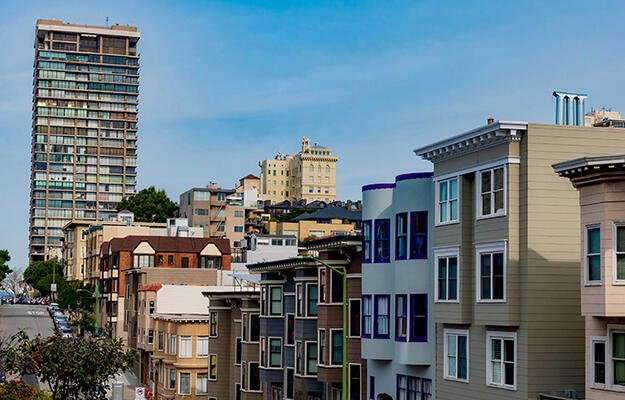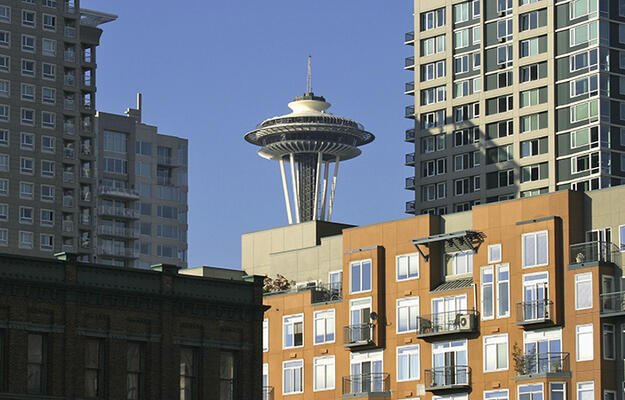
Building Inclusive Suburbs: Asian Americans and the Battle for Belonging
Oriya Cohen and Maya Brennan contributed to this post. The views expressed in this article are those of the interviewee.
Suburban communities across the United States are rapidly diversifying. As suburbia becomes less white, new residents have reshaped its form and use, expanding a particular version of the American dream to include their diverse histories and cultures. Asian Americans have been central to this process, overcoming a long history of exclusionary immigration policies and racially restrictive housing policies to stake their claim in suburbia.
This May, in honor of Asian Pacific American Heritage Month, we spoke with Dr. Willow Lung-Amam, author of Trespassers? Asian Americans and the Battle for Suburbia and Assistant Professor at the University of Maryland’s Urban Studies and Planning program, to learn more about Asian American integration in the suburbs. In her book, Dr. Lung-Amam explores the Asian American experience of suburbanization in Fremont, California, one of the largest Asian American–majority suburbs in Silicon Valley and in the US, which is home to a multiethnic population that includes many highly educated Asian American professionals. The book captures the efforts of Asian Americans in Fremont to adopt and adapt elements of suburbs formerly occupied by largely white middle-class residents to reflect their social and communal traditions, values, and their new version of the American dream. But the book also shows how their adaptations—from the development of “Asian malls” to their construction of so-called “McMansions”–received significant pushback from non-Asian neighbors, planners, and policymakers.
At a time when contemporary political dialogue about immigration and diversity in the United States has stoked division within some communities and reaffirmed commitments to inclusion in others, the experience of Asian Americans in Fremont provides valuable lessons for building more culturally and racially inclusive communities.
How is the Asian American experience of suburbanization different from other communities of color? How is it similar? Why are the suburbs and the process of suburbanization for Asian Americans so important to understand today?
Asian Americans’ experiences of suburbanization share both similarities and differences with other groups of color, particularly African Americans. Similarly, neighborhoods such as Chinatowns and Japantowns resulted from racially discriminatory policies and practices, such as racial zoning, redlining, and violence that contained Asian Americans within disinvested neighborhoods in cities like San Francisco and Oakland through much of the 20th century. When some of these restrictions began to wane, however, Asian Americans were often able to move into white suburbs before African Americans and Latinos, in part because of changing perceptions of Asian Americans as more “acceptable” neighbors. Still, like other groups of color, Asian Americans suburbanites were often met with hostility. As early suburban pioneers, some acted as “straw buyers” for African Americans or otherwise helped other racial minorities purchase homes in newly integrated suburbs. Today, Asian Americans are the most suburban of all racial and ethnic minority groups. Understanding how they have shaped the suburbs and been shaped by them is critical to the Asian American story.
What made Fremont a fitting example to illustrate Asian Americans’ struggle for a place in suburbia? How do its demographic and political characteristics lend themselves to the broader story of Asian American integration and belonging in the United States?
Fremont has been home to several waves of Asian American suburbanites. The first wave was largely comprised of native-born Chinese and Japanese Americans who moved from ethnic enclaves or inner-ring suburbs in San Francisco and Oakland during the mid-20th century. As racially restrictive immigration laws began to change, they were joined by immigrants from Korea, the Philippines, Vietnam, and elsewhere. Since the 1990s, Fremont has attracted many immigrants from Taiwan, China, and India who arrive on professional visas to work in high-tech Silicon Valley jobs. These waves speak to the push and pull factors that have driven Asian Americans’ diverse patterns of immigration and suburbanization, as well as the disparate opportunity structures facing Asian groups from different countries and classes. It paints a diverse portrait of who Asian American suburbanites are today.
How did Asian Americans in Fremont adapt existing suburban spaces to meet their needs? What were some of the tools of exclusion used by planners, policymakers, and established neighbors to push back against Asian American influence in the suburbs?
Asian Americans have built their own American dream in suburbs like Fremont. They have reshaped the culture of schools, built new shopping centers, and adapted homes to reflect different desires for their suburban lives and communities than those of their white, middle-class neighbors. Asian malls have adapted the form of traditional suburban shopping centers with new selections of stores, configurations, and models of ownership. These adaptations have made malls into popular cultural and community meeting grounds for diverse Asian groups that help immigrants adapt to life in new communities and spur their economic stability and mobility in the US. The condominium retail form of ownership, for instance, which is common in Asia and many Asian malls in Silicon Valley, allows businesses to own their units and sublease space within them, creating malls that appear more like indoor marketplaces and create economic opportunities for immigrant entrepreneurs. Asian Americans have also adapted the form of single-family homes and suburban neighborhoods by introducing feng shui design principles and building homes for multigenerational living.
In Fremont, many established residents, planners, and policymakers have critiqued these changes, often based on the features that mark them as different from established suburban forms and norms. These contests have also led to new planning policies and regulations aimed at muting these differences and making these places better “fit” into the existing suburban landscape. For instance, Asian malls have been subject to new condominium retail regulations that have made them appear and function more like mainstream shopping centers. In some neighborhoods, controversies over so-called “McMansions” built by Asian Americans have led to new development standards and design guidelines that make housing configurations desired by Asian American families for multigenerational living virtually impossible. Such policies have reinforced dominant ideas about who and what belongs in suburbia and landscapes that protect white suburbanites’ privilege and power. “Landscapes of difference,” like Asian malls and multigenerational homes, call into question the seemingly natural relationships between race and suburbia that help secure white Americans’ privileged place within it.
As the suburbs increasingly diversify and as communities across the country grapple with demographic changes, what lessons can we learn from Fremont about fostering inclusion in the suburbs?
Over the past several years, the resurgent nativist, racist backlash against immigrants has been fueled and given shelter by policies and rhetoric at the highest levels of government. Fremont shows how local communities, particularly suburbs, are implicated in the politics of immigrant exclusion. But while the book largely shows how Asian Americans have been made to feel out of place or unwelcomed in suburbia, it also reveals possibilities for greater inclusion. By pressing for diverse political representation, creating inclusive decisionmaking forums and processes, and questioning the underlying norms and disparate impacts of plans and policies, suburban municipalities can help create safe, welcoming communities that push back against the troubling federal tide.
Photo by merzzie/Shutterstock


